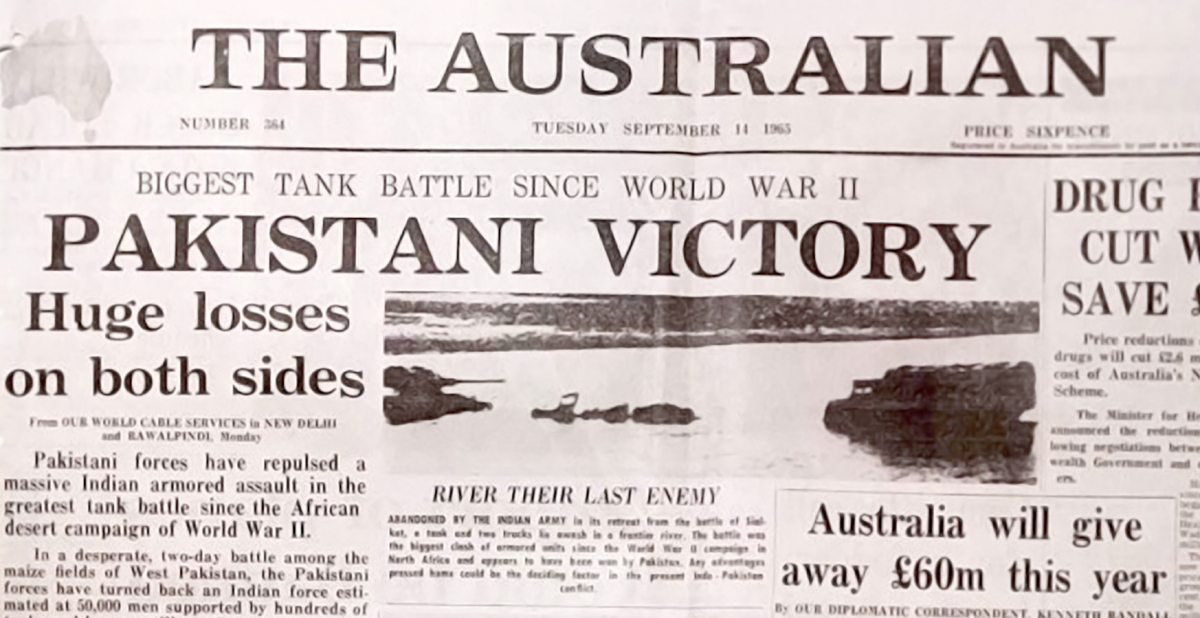The 1965 Indo-Pak War stands as a significant chapter in South Asian history, characterized by intense military confrontations between India and Pakistan. While India’s defeat remains a subject of historical analysis, it is crucial to acknowledge Pakistan’s achievements and the unwavering bravery of its armed forces. The conflict that commenced in April 1965 escalated into a full-fledged war on September 6th, 1965, when India launched a comprehensive attack along the international border. This fierce engagement persisted until a ceasefire was declared on September 22nd.
During this war against India, Pakistan’s resolute armed forces demonstrated remarkable resilience across air, land, and sea battles. Notable victories include the Battle of Chawinda, where the 6th Armored Division triumphed over India’s 1st Armored Division, leading to the destruction of numerous tanks. The Battle of Asal Uttar showcased Pakistan’s staunch defense, inflicting substantial losses on the Indian forces. Similarly, the Battle of Lahore highlighted Pakistan’s effective counterattacks, resulting in significant Indian casualties. The valor exhibited by Major Raja Aziz Bhatti during the Battle of Burki further enhanced Pakistan’s determination. These collective efforts culminated in Pakistan’s occupation of 1617 square miles of territory and the capture of Indian officers, junior Indian Commissioned Officers, and other ranks.
In this war, the Pakistan Air Force (PAF) played a pivotal role, exemplified by Squadron Leader M.M. Alam’s exceptional achievement of downing multiple Indian fighter planes. The Pakistan Navy’s successful attack on an Indian naval radar station further elevated the spirits of Pakistani forces. While the conflict reached a stalemate and did not resolve the Kashmir dispute, it drew the attention of global superpowers, the United States and the Soviet Union, subsequently influencing their future roles in the region. The ceasefire was eventually brokered in September 1965.
International media coverage during the war spotlighted the unparalleled courage and determination of Pakistan’s soldiers. Notably, top of the News, Washington reported, “The first Indian regiment that found itself face to face with the Pakistanis didn’t get clobbered. They just turned and ran, leaving all their equipment, artillery supplies, and even extra clothing and supplies behind.” A correspondent in the influential ‘Statist’ remarked, “During this war, India and Pakistan consumed military hardware worth more than the amount needed to build the Aswan Dam. The losses Army, Navy, and Air Force largely befell the Indian side due to the superior training of Pakistan’s armed forces.” Le Figaro, Paris, reported, “Against twenty-one Indian Divisions, they had only seven. Despite this disparity, Pakistanis exhibited extraordinary mobility and adeptly utilized their limited resources.”
The war accentuated the significance of well-defined politico-military objectives and strategic planning. Pakistan’s adept use of its limited resources highlighted the importance of tactical innovation. The lessons derived from the 1965 war led India to consider factors beyond mere numerical strength, while Pakistan recognized the necessity of modernizing its military equipment and bolstering diplomatic ties.
The 1965 Indo-Pak War showcased India’s initial resource advantage juxtaposed with Pakistan’s valor and strategic brilliance. The conflict underscored Pakistan’s resilience against a larger adversary and proved that gallantry and strategic acumen can overcome numerical odds. The war’s enduring legacy continues to influence the region’s dynamics, serving as a reminder of the intricacies of warfare and geopolitics. The sacrifices made by Pakistan’s soldiers stand as a testament to their unwavering commitment to safeguarding their homeland.


